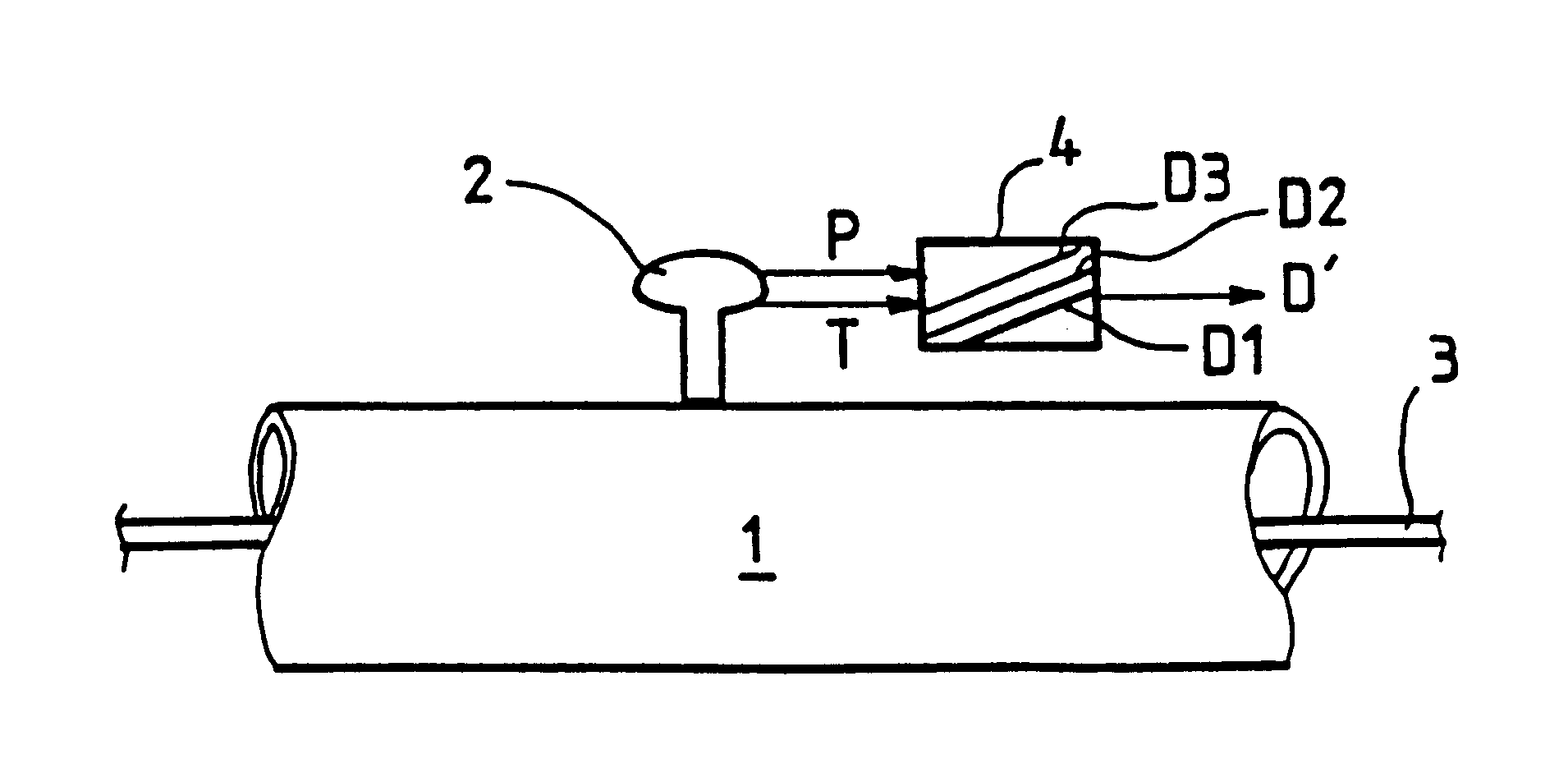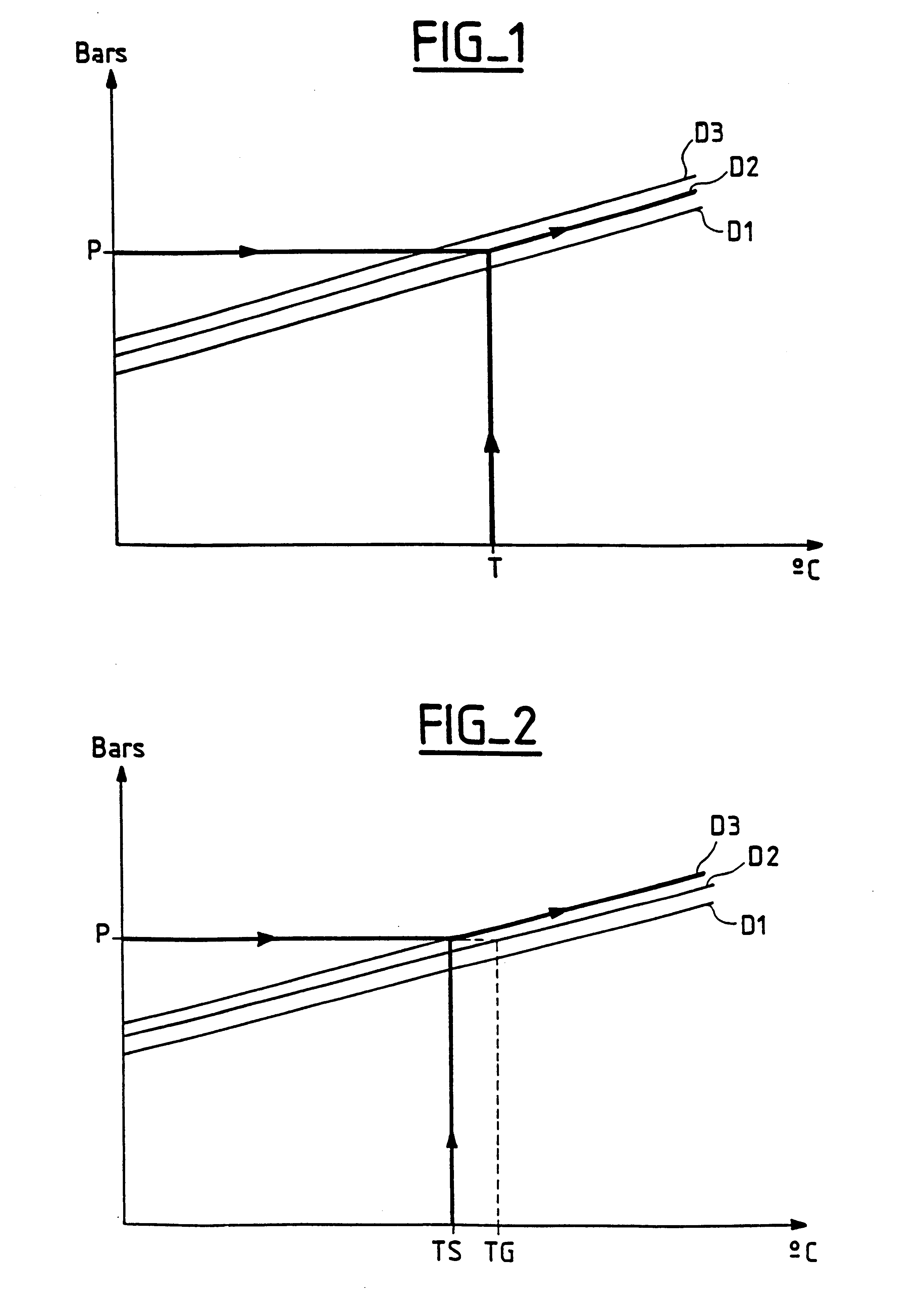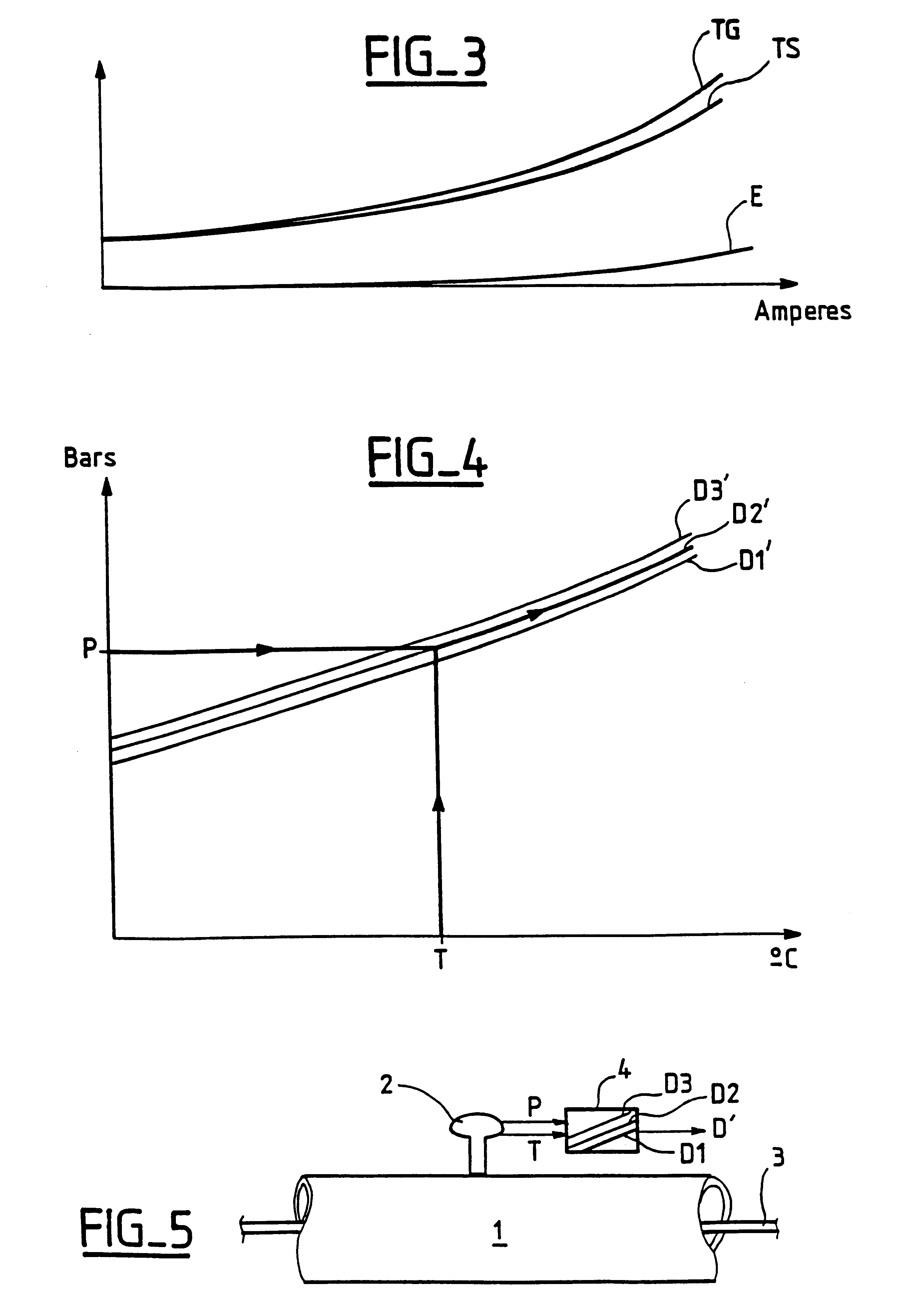Method of measuring the density of a dielectric gas in a buried metal-clad line
a dielectric gas and electricity line technology, applied in the direction of power cables, cables, instruments, etc., can solve the problems of reducing the protection of metal-clad lines, affecting the accuracy of dielectric gas measurement, and affecting the density of gas measurement, so as to achieve the effect of increasing curren
- Summary
- Abstract
- Description
- Claims
- Application Information
AI Technical Summary
Benefits of technology
Problems solved by technology
Method used
Image
Examples
Embodiment Construction
FIGS. 1 and 2 are described above.
In FIG. 3, the curve TG shows how the mean temperature of the gas inside the case of a buried metal-clad line varies as a function of increasing current carried by the conductor of the metal-clad line. The curve TS shows how the surface temperature of the case of the buried metal-clad line varies as a function of increasing current being carried by the conductor of the metal-clad line. The curves TS and TG are obtained by experimental measurements. The curve E represents the difference between the curves TG and TS. For each temperature value measured by a temperature sensor mounted on the outside surface of the case of the buried metal-clad line, there therefore corresponds a difference between the temperature as measured by the sensor and the mean temperature of the gas inside the case of the metal-clad line. And each difference between the temperature measured by the temperature sensor and the mean temperature of the gas inside the case of the met...
PUM
 Login to View More
Login to View More Abstract
Description
Claims
Application Information
 Login to View More
Login to View More - R&D
- Intellectual Property
- Life Sciences
- Materials
- Tech Scout
- Unparalleled Data Quality
- Higher Quality Content
- 60% Fewer Hallucinations
Browse by: Latest US Patents, China's latest patents, Technical Efficacy Thesaurus, Application Domain, Technology Topic, Popular Technical Reports.
© 2025 PatSnap. All rights reserved.Legal|Privacy policy|Modern Slavery Act Transparency Statement|Sitemap|About US| Contact US: help@patsnap.com



